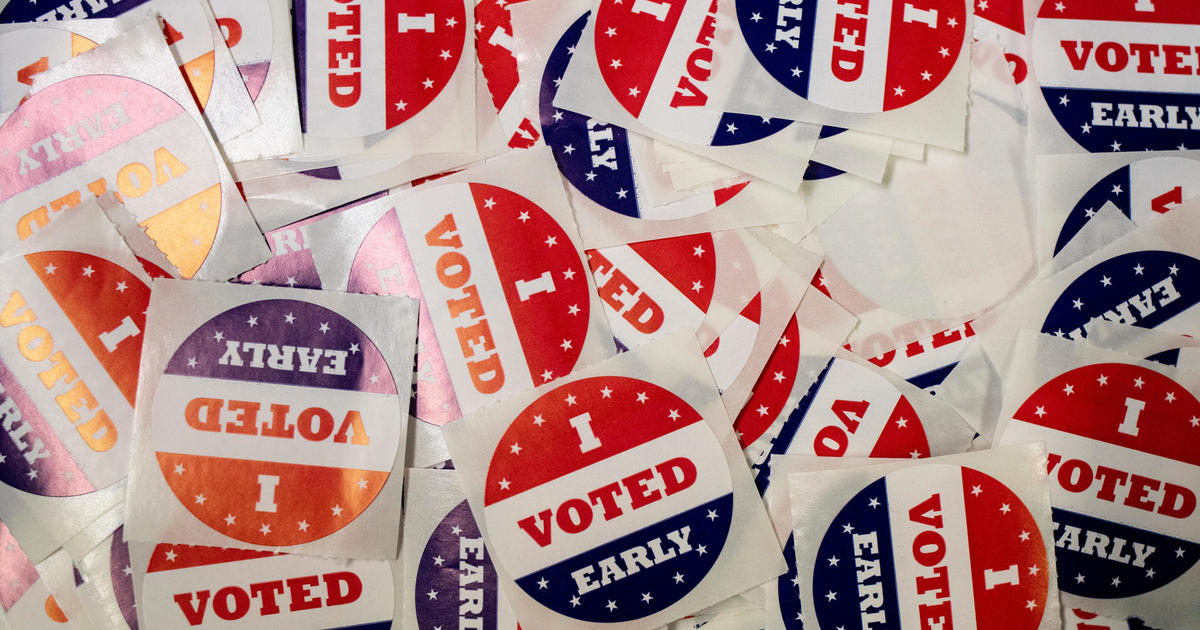Weeks before Nov. 5, the date of the 2024 election, the vast majority of voters across the country will be able to cast their votes early in person or by mail in most states, if that’s what they’d prefer. The map below has more information about early voting options.
Alabama became the first state to begin sending its mail votes on Sept. 11. It’s one of 10 states that will begin sending mail ballots to voters more than 45 days before Election Day. Some states will begin early, in-person voting in September. Military and overseas ballots must be sent 45 days before Election Day, so they’ll be mailed on Sept. 21. Each state determines its own voter registration deadlines.
Americans have seen a dramatic expansion in their ability to vote early in person and by mail since the turn of the century. The Center for Election Innovation and Research noted that in 2000, just 40% of voters had access to early voting, either in person or by mail. Now, 97% have at least one option to vote before Election Day.
Map of voting options by state for the 2024 election
This map shows where options for voting early are in place and what options are available:

States that offer early voting and mail-in ballots to all voters
Forty-six states and the District of Columbia offer early voting options to all voters. Here are the states that offer both early in-person voting and mail voting to everyone, according to the Center for Election Innovation and Research.
- Alaska
- Arizona
- Arkansas
- California: All-mail election: All active, registered voters receive ballot.
- Colorado: All-mail election: All active, registered voters receive ballot.
- D.C.: All-mail election: All active, registered voters receive ballot.
- Delaware
- Florida
- Georgia
- Hawaii: All-mail election: All active, registered voters receive ballot.
- Idaho
- Illinois
- Iowa
- Kansas
- Maine
- Maryland
- Massachusetts
- Michigan
- MInnesota
- Montana
- Nebraska
- Nevada: All-mail election: All active, registered voters receive ballot.
- New Jersey
- New Mexico
- New York
- North Carolina
- North Dakota
- Ohio
- Oklahoma
- Oregon: All-mail election: All active, registered voters receive ballot.
- Pennsylvania
- Rhode Island
- South Dakota
- Utah: All-mail election: All active, registered voters receive ballot.
- Vermont: All-mail election: All active, registered voters receive ballot.
- Virginia
- Washington: All-mail election: All active, registered voters receive ballot.
- Wisconsin
- Wyoming
States that offer early voting for all but require an eligible reason for mail-in ballots
Here are the states that have early in-person voting but require an eligible reason to vote by mail.
- Connecticut
- Indiana
- Kentucky
- Louisiana
- Missouri
- South Carolina
- Tennessee
- Texas
States where no early voting option is available to all voters, and an eligible reason to vote by mail is needed
Four states do not offer early voting and require an eligible reason to vote by mail, which means not everyone in these states has an option to vote on any day but Election Day.
- Alabama
- Mississippi
- New Hampshire
- West Virginia
Harris-Trump race tight in battleground states
In the nation’s seven battleground states — the most competitive states in the country — the race between Vice President Kamala Harris and former President Donald Trump is very tight. CBS News polling of Michigan, Wisconsin and Pennsylvania in September shows them tied or separated by no more than 2 points, which is within the margin of error. CBS News also regularly updates its estimates of support for Harris and Trump in the seven battleground states — those three states and also Arizona, Nevada, North Carolina and Georgia — which are likely to determine who wins the presidency.
On Sept. 10, Harris and Trump travel to Philadelphia for their first debate — and so far, it’s their only debate. Harris’ running mate, Minnesota Gov. Tim Walz, and Trump’s VP pick, Ohio Sen. JD Vance, will meet in New York on Oct. 1 for a debate hosted by CBS News.
Republicans, Democrats prepare for election challenges
Republicans and Democrats alike have assembled teams of lawyers to address any voting challenges surrounding the election. Since 2020, more than two dozen counties in eight states have tried to block certification of their elections — including in Arizona, North Carolina, and Pennsylvania. This year alone, officials in the battleground states of Nevada and Michigan attempted not to certify local races, in an early indication of what may come to pass in the days after November’s presidential election.
While Republican groups have been pushing GOP voters to embrace early and mail voting, Trump often undermines those efforts when he refers to mail ballots as “treacherous.” He and Republicans allies and officials continue to raise the specter of election fraud and urge voters not to trust absentee voting. In June, the former president warned thousands at a rally in Detroit to “watch your vote” because “they” — Democrats — would “destroy” and “terminate” their votes in November.
In Georgia last month, the state election board approved two rules that empower local officials in any Georgia county to question the election before local officials certify its results. A vote of certification officially ends the canvassing process, in which ballots are counted and tabulated. The rules are unique in that the board’s political appointees are attempting to expand the role of officials who certify the vote at a county level. These new rules have the potential to delay certification of presidential results past its strict deadline of Nov. 12 at 5 p.m. ET.

